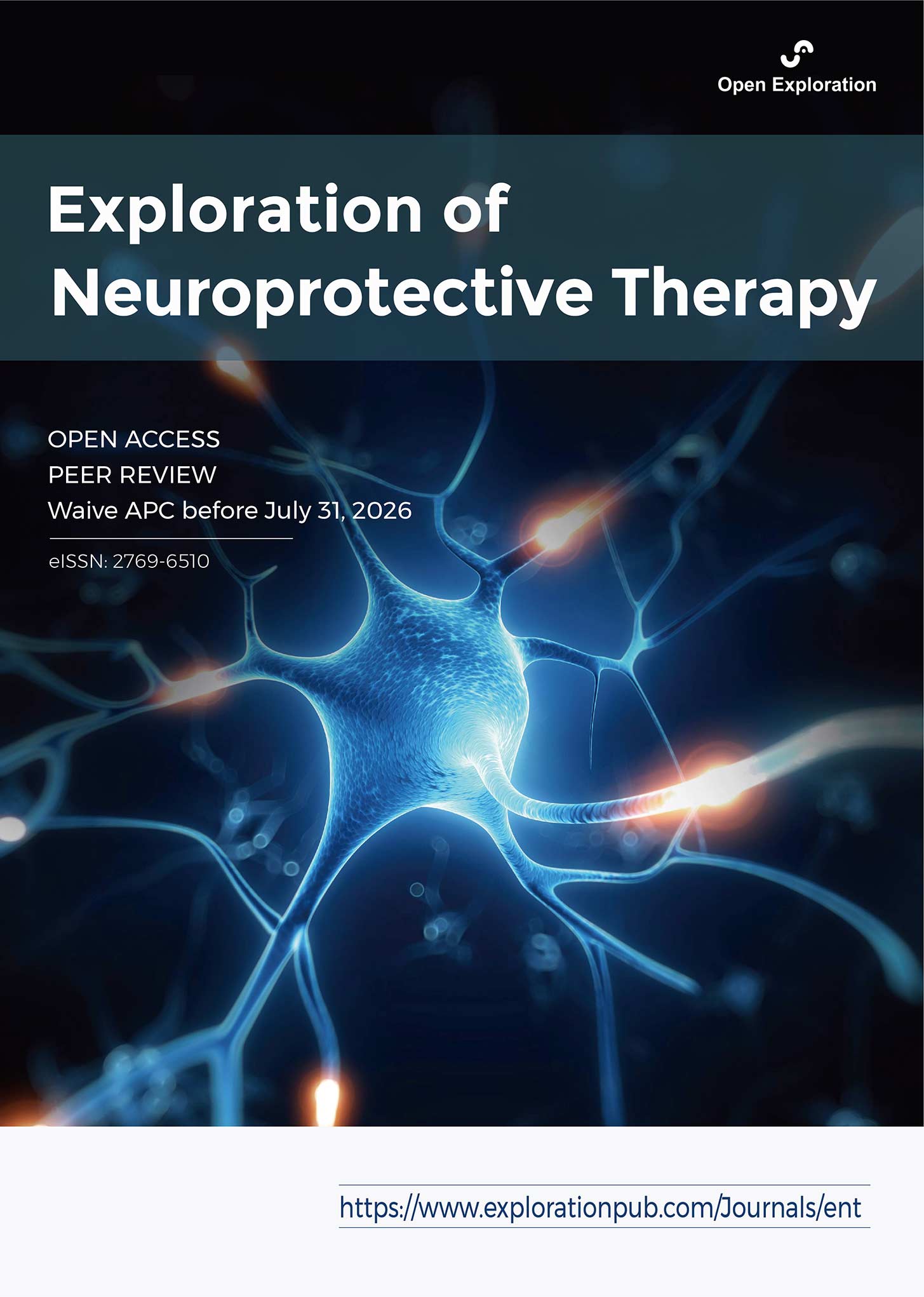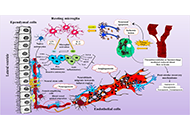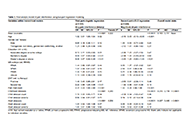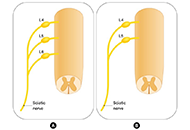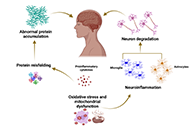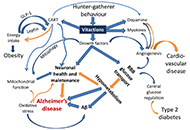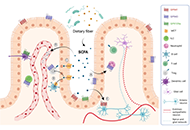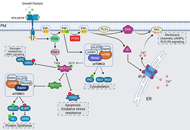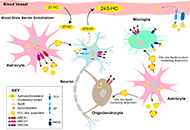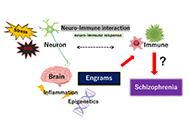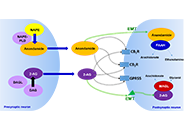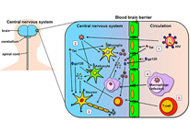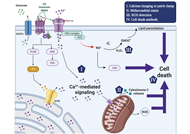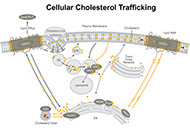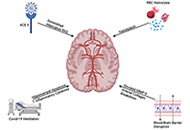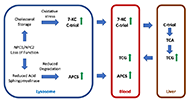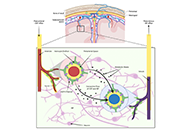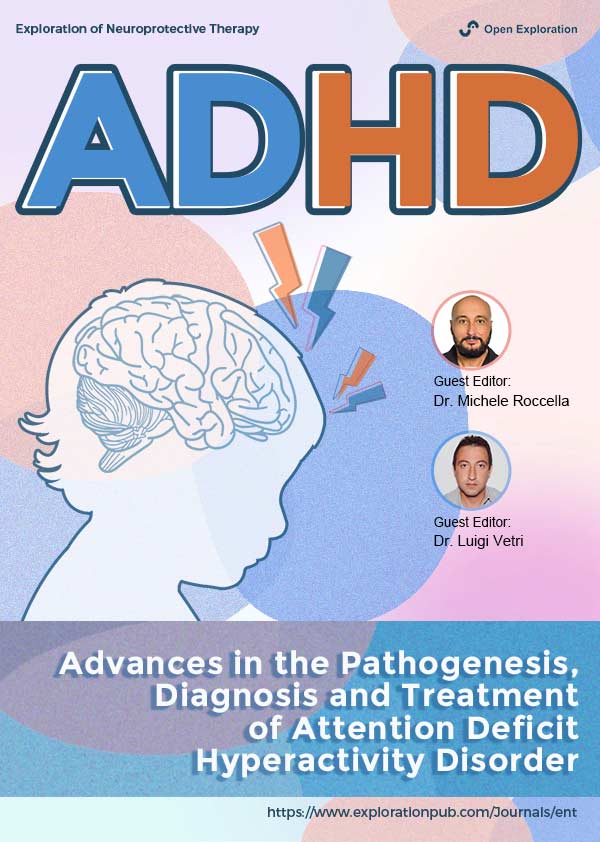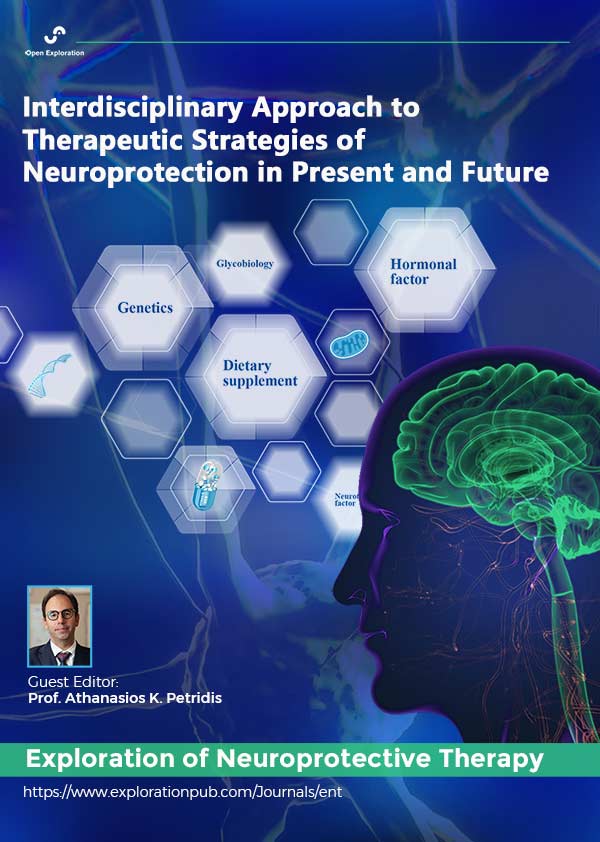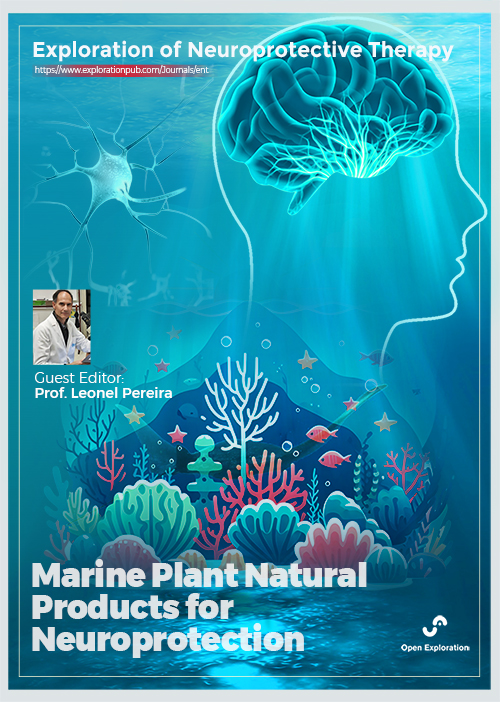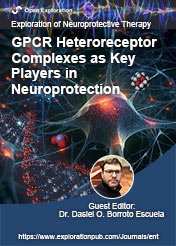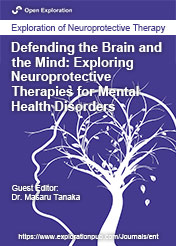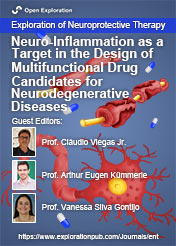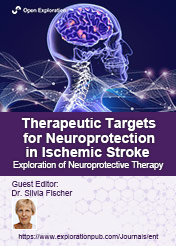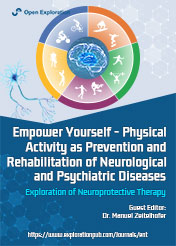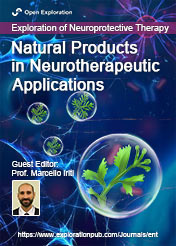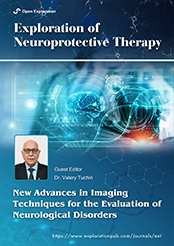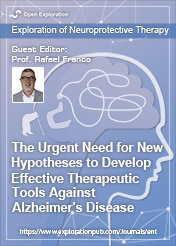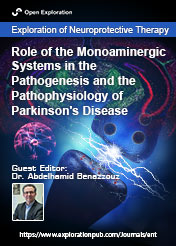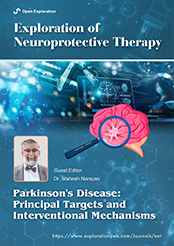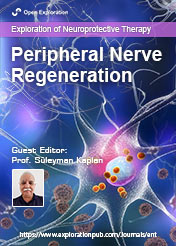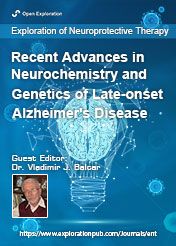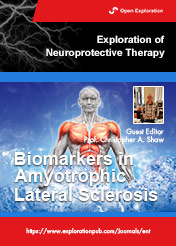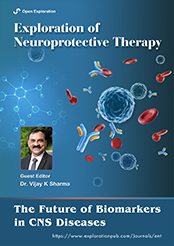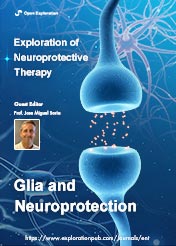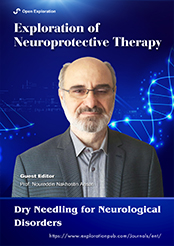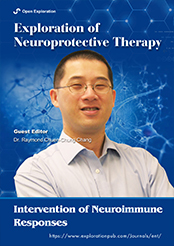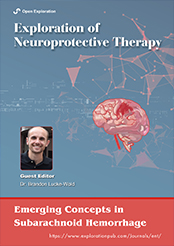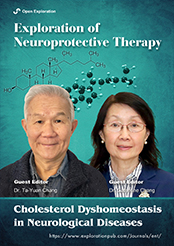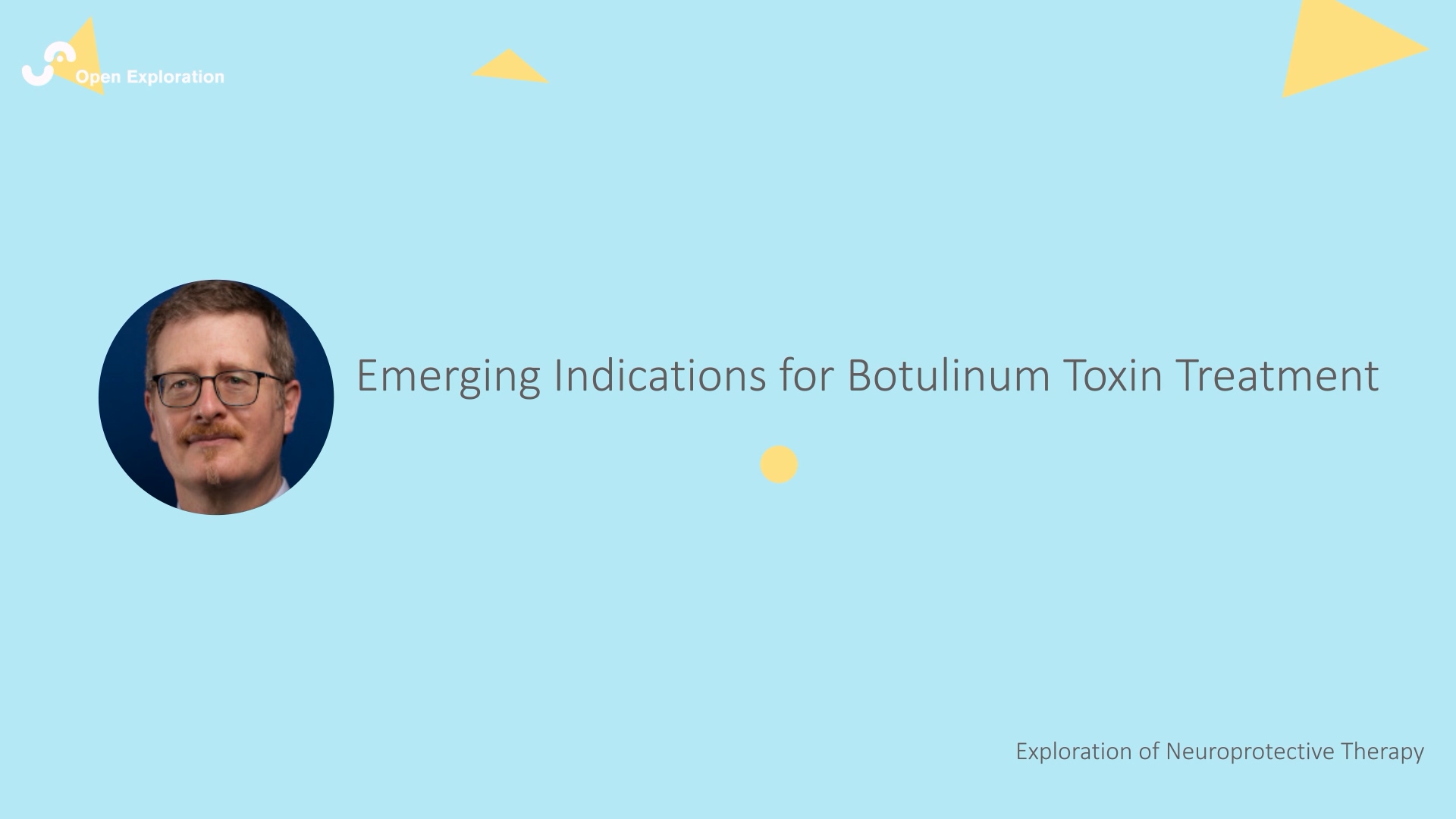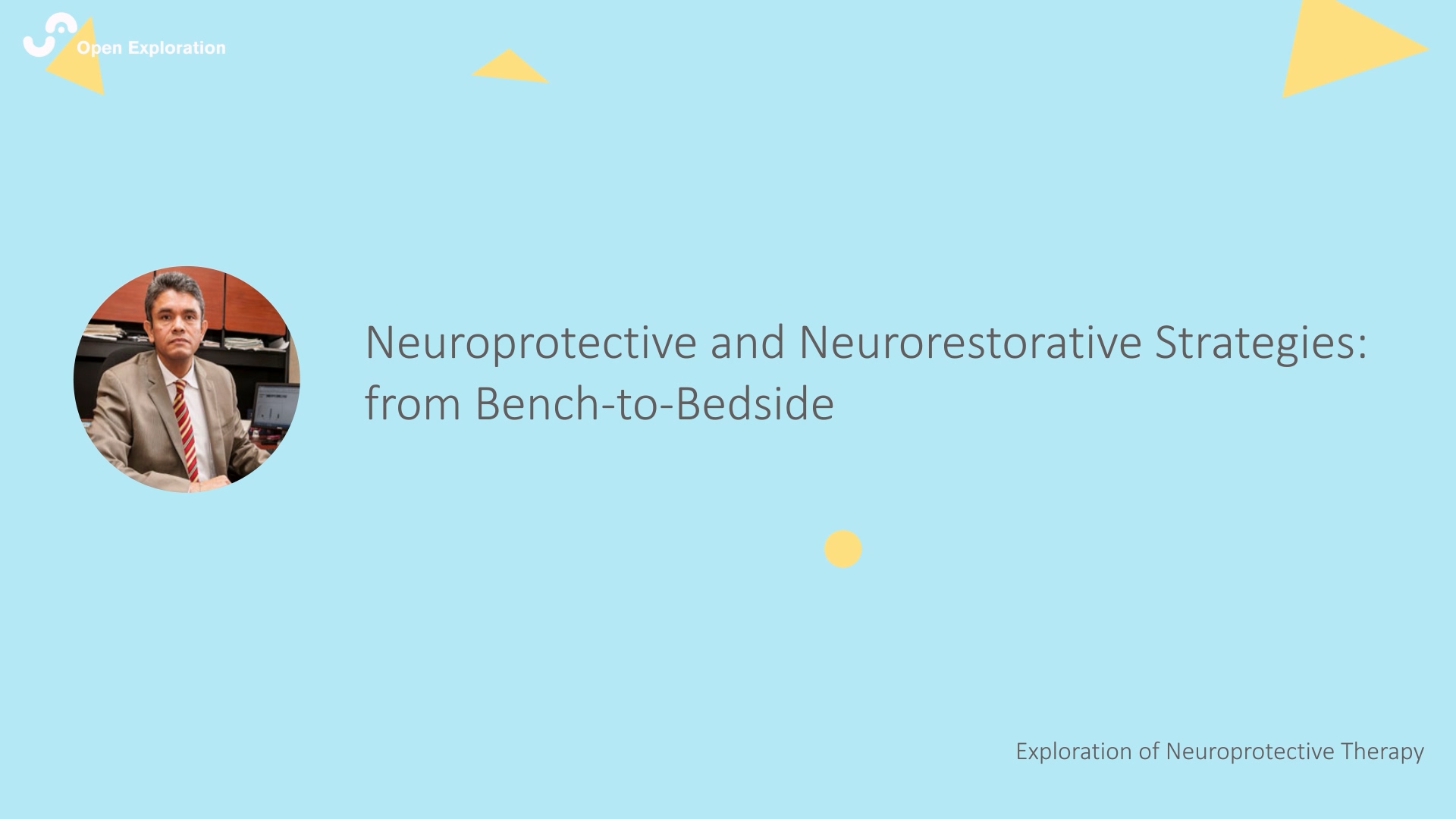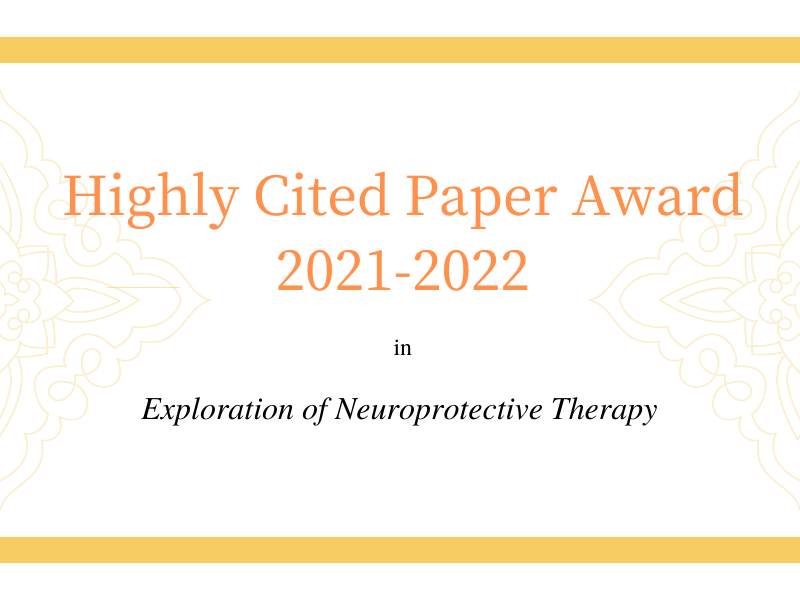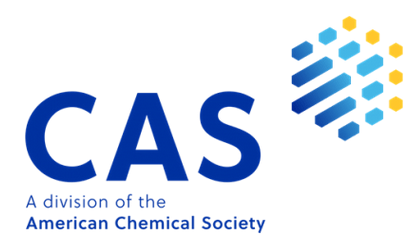-
Exploration of Neuroprotective Therapy
eISSN: 2769-6510EiC: Rafael Franco, PhDFrequency: BimonthlyAPC: No Article Processing Charge before July 31, 2026Publishing Model: Open AccessPeer Review Model: Single BlindPermanent Archive: PorticoIndexing & Archiving: CAS, DOAJ, Google Scholar, J-Gate, Dimensions, etc.Articles Cerebral stroke-induced neurogenesis: insights and therapeutic implicationsOpen AccessReviewStroke, one of the leading causes of global morbidity and mortality, results from disrupted cerebral blood circulation, leads to cellular damage or death. Ischemic stroke, the predominant subtype, r [...] Read more.Mydhili Radhakrishnan ... Sumana ChakravartyPublished: April 26, 2024 Explor Neuroprot Ther. 2024;4:172–197
Cerebral stroke-induced neurogenesis: insights and therapeutic implicationsOpen AccessReviewStroke, one of the leading causes of global morbidity and mortality, results from disrupted cerebral blood circulation, leads to cellular damage or death. Ischemic stroke, the predominant subtype, r [...] Read more.Mydhili Radhakrishnan ... Sumana ChakravartyPublished: April 26, 2024 Explor Neuroprot Ther. 2024;4:172–197
DOI: https://doi.org/10.37349/ent.2024.00078
This article belongs to the special issue Intervention of Neuroimmune Responses Lifetime stressors relate to invisible symptoms of multiple sclerosisOpen AccessOriginal ArticleAim: Childhood stressors can increase adult stress perception and may accumulate over the lifespan to impact symptoms of multiple sclerosis (MS). Growing evidence links childhood stressors (e.g., [...] Read more.Carri S. Polick ... Sarah A. StoddardPublished: April 22, 2024 Explor Neuroprot Ther. 2024;4:158–171
Lifetime stressors relate to invisible symptoms of multiple sclerosisOpen AccessOriginal ArticleAim: Childhood stressors can increase adult stress perception and may accumulate over the lifespan to impact symptoms of multiple sclerosis (MS). Growing evidence links childhood stressors (e.g., [...] Read more.Carri S. Polick ... Sarah A. StoddardPublished: April 22, 2024 Explor Neuroprot Ther. 2024;4:158–171
DOI: https://doi.org/10.37349/ent.2024.00077 Neuronal plasticity in dorsal root ganglia following sciatic nerve injuryOpen AccessMini ReviewIt is widely known that each tissue has unique mechanisms to respond to injury and maintain homeostasis effectively. Although peripheral nerves have limited regeneration capacity, they conduct a com [...] Read more.Burcu Delibaş ... Süleyman KaplanPublished: April 17, 2024 Explor Neuroprot Ther. 2024;4:148–157
Neuronal plasticity in dorsal root ganglia following sciatic nerve injuryOpen AccessMini ReviewIt is widely known that each tissue has unique mechanisms to respond to injury and maintain homeostasis effectively. Although peripheral nerves have limited regeneration capacity, they conduct a com [...] Read more.Burcu Delibaş ... Süleyman KaplanPublished: April 17, 2024 Explor Neuroprot Ther. 2024;4:148–157
DOI: https://doi.org/10.37349/ent.2024.00076
This article belongs to the special issue Peripheral Nerve Regeneration Biomarkers in neurodegenerative diseases: a broad overviewOpen AccessReviewDegeneration and dysfunction of neurons in the brain are hallmarks of neurodegenerative diseases. Over the past decades, significant efforts have been devoted to the development and validation of bi [...] Read more.Sathish Selvam, Velpandi AyyavooPublished: April 16, 2024 Explor Neuroprot Ther. 2024;4:119–147
Biomarkers in neurodegenerative diseases: a broad overviewOpen AccessReviewDegeneration and dysfunction of neurons in the brain are hallmarks of neurodegenerative diseases. Over the past decades, significant efforts have been devoted to the development and validation of bi [...] Read more.Sathish Selvam, Velpandi AyyavooPublished: April 16, 2024 Explor Neuroprot Ther. 2024;4:119–147
DOI: https://doi.org/10.37349/ent.2024.00075
This article belongs to the special issue The Future of Biomarkers in CNS Diseases “Vitaction” deficiency: a possible root cause for multiple lifestyle disorders including Alzheimer’s diseaseOpen AccessPerspectiveBehavioural environment and behavioural responses of an individual are known to affect multiple aspects of physiology including neuroendocrine and growth factor signalling, angiogenesis, stem cell d [...] Read more.Milind Watve, Ashwini Keskar SardeshmukhPublished: April 07, 2024 Explor Neuroprot Ther. 2024;4:108–118
“Vitaction” deficiency: a possible root cause for multiple lifestyle disorders including Alzheimer’s diseaseOpen AccessPerspectiveBehavioural environment and behavioural responses of an individual are known to affect multiple aspects of physiology including neuroendocrine and growth factor signalling, angiogenesis, stem cell d [...] Read more.Milind Watve, Ashwini Keskar SardeshmukhPublished: April 07, 2024 Explor Neuroprot Ther. 2024;4:108–118
DOI: https://doi.org/10.37349/ent.2024.00074
This article belongs to the special issue The Urgent Need for New Hypotheses to Develop Effective Therapeutic Tools Against Alzheimer's Disease Targeting short-chain fatty acids receptors signalling for neurological disorders treatmentOpen AccessPerspectiveShort-chain fatty acids (SCFAs) play a key role regulating immune and metabolic homeostasis. Consequently, dysregulation in SCFA levels is involved in the pathogenesis of autoimmune, inflammatory, m [...] Read more.Carolina Prado, Rodrigo PachecoPublished: March 19, 2024 Explor Neuroprot Ther. 2024;4:100–107
Targeting short-chain fatty acids receptors signalling for neurological disorders treatmentOpen AccessPerspectiveShort-chain fatty acids (SCFAs) play a key role regulating immune and metabolic homeostasis. Consequently, dysregulation in SCFA levels is involved in the pathogenesis of autoimmune, inflammatory, m [...] Read more.Carolina Prado, Rodrigo PachecoPublished: March 19, 2024 Explor Neuroprot Ther. 2024;4:100–107
DOI: https://doi.org/10.37349/ent.2024.00073Special Issues Advances in the Pathogenesis, Diagnosis and Treatment of Attention Deficit Hyperactivity Disorder
Advances in the Pathogenesis, Diagnosis and Treatment of Attention Deficit Hyperactivity DisorderDr. Michele Roccella Dr. Luigi Vetri
Submission Deadline: December 30, 2024
Published Articles: 0
 Interdisciplinary Approach to Therapeutic Strategies of Neuroprotection in Present and Future
Interdisciplinary Approach to Therapeutic Strategies of Neuroprotection in Present and FutureProf. Athanasios K. Petridis
Submission Deadline: October 05, 2024
Published Articles: 0
 Marine Plant Natural Products for Neuroprotection
Marine Plant Natural Products for NeuroprotectionProf. Leonel Pereira
Submission Deadline: September 25, 2024
Published Articles: 0
 GPCR Heteroreceptor Complexes as Key Players in Neuroprotection
GPCR Heteroreceptor Complexes as Key Players in NeuroprotectionDr. Dasiel O. Borroto Escuela
Submission Deadline: May 31, 2024
Published Articles: 0
 Defending the Brain and the Mind: Exploring Neuroprotective Therapies for Mental Health Disorders
Defending the Brain and the Mind: Exploring Neuroprotective Therapies for Mental Health DisordersDr. Masaru Tanaka
Submission Deadline: January 31, 2024
Published Articles: 1
 Neuro-Inflammation as a Target in the Design of Multifunctional Drug Candidates for Neurodegenerative Diseases
Neuro-Inflammation as a Target in the Design of Multifunctional Drug Candidates for Neurodegenerative DiseasesProf. Claudio Viegas Jr. Prof. Arthur Eugen Kümmerle Prof. Vanessa Silva Gontijo
Submission Deadline: February 28, 2024
Published Articles: 2
 Therapeutic Targets for Neuroprotection in Ischemic Stroke
Therapeutic Targets for Neuroprotection in Ischemic StrokeDr. Silvia Fischer
Submission Deadline: August 31, 2024
Published Articles: 3
 Empower Yourself - Physical Activity as Prevention and Rehabilitation of Neurological and Psychiatric Diseases
Empower Yourself - Physical Activity as Prevention and Rehabilitation of Neurological and Psychiatric DiseasesDr. Manuel Zeitelhofer
Submission Deadline: September 30, 2023
Published Articles: 1
 Natural Products in Neurotherapeutic Applications
Natural Products in Neurotherapeutic ApplicationsProf. Marcello Iriti
Submission Deadline: July 31, 2024
Published Articles: 1
 New Advances in Imaging Techniques for the Evaluation of Neurological Disorders
New Advances in Imaging Techniques for the Evaluation of Neurological DisordersProf. Valery V. Tuchin
Submission Deadline: June 30, 2023
Published Articles: 1
 The Urgent Need for New Hypotheses to Develop Effective Therapeutic Tools Against Alzheimer's Disease
The Urgent Need for New Hypotheses to Develop Effective Therapeutic Tools Against Alzheimer's DiseaseProf. Rafael Franco
Submission Deadline: June 30, 2024
Published Articles: 5
 Role of the Monoaminergic Systems in the Pathogenesis and the Pathophysiology of Parkinson's Disease
Role of the Monoaminergic Systems in the Pathogenesis and the Pathophysiology of Parkinson's DiseaseDr. Abdelhamid Benazzouz
Submission Deadline: May 31, 2023
Published Articles: 2
 Parkinson's Disease: Principal Targets and Interventional Mechanisms
Parkinson's Disease: Principal Targets and Interventional MechanismsProf. Mahesh Narayan
Submission Deadline: March 15, 2023
Published Articles: 4
 Peripheral Nerve Regeneration
Peripheral Nerve RegenerationProf. Süleyman Kaplan
Submission Deadline: March 15, 2024
Published Articles: 1
 Recent Advances in Neurochemistry and Genetics of Late-onset Alzheimer's Disease
Recent Advances in Neurochemistry and Genetics of Late-onset Alzheimer's DiseaseDr. Vladimir J. Balcar
Submission Deadline: December 31, 2022
Published Articles: 1
 Biomarkers in Amyotrophic Lateral Sclerosis
Biomarkers in Amyotrophic Lateral SclerosisProf. Christopher A. Shaw
Submission Deadline: September 30, 2022
Published Articles: 4
 The Future of Biomarkers in CNS Diseases
The Future of Biomarkers in CNS DiseasesDr. Vijay K Sharma
Submission Deadline: September 01, 2022
Published Articles: 5
 Glia and Neuroprotection
Glia and NeuroprotectionProf. Jose Miguel Soria
Submission Deadline: August 31, 2022
Published Articles: 3
 Dry Needling for Neurological Disorders
Dry Needling for Neurological DisordersProf. Noureddin Nakhostin Ansari
Submission Deadline: December 30, 2023
Published Articles: 5
 Intervention of Neuroimmune Responses
Intervention of Neuroimmune ResponsesDr. Raymond Chuen-Chung Chang
Submission Deadline: April 30, 2023
Published Articles: 5
-
-
Focus
-
NewsletterWinners of Highly Cited Paper Award 2021-2022
 Jan. 31, 2023ENT is now indexed in Chemical Abstract Services (CAS).
Jan. 31, 2023ENT is now indexed in Chemical Abstract Services (CAS). Jan. 30, 2023MoreExploration of Neuroprotective Therapy is now indexed in DOAJ
Jan. 30, 2023MoreExploration of Neuroprotective Therapy is now indexed in DOAJ Feb. 24, 2022
Feb. 24, 2022 -
Selected Special IssuesTopic: The Urgent Need for New Hypotheses to Develop Effective Therapeutic Tools Against Alzheimer's Disease Topic: Parkinson's Disease: Principal Targets and Interventional Mechanisms Topic: Emerging Concepts in Subarachnoid Hemorrhage Topic: Intervention of Neuroimmune Responses Topic: Cholesterol Dyshomeostasis in Neurological Diseases More
-
Articles Available in PMCPapers supported by NIH (or other funding bodies) are encouraged to be deposited in PMC.
